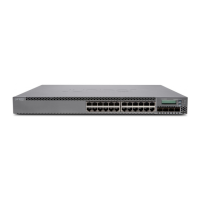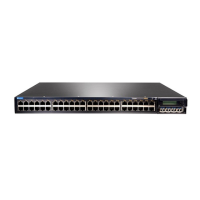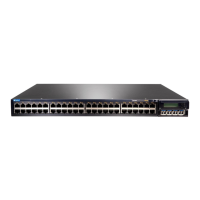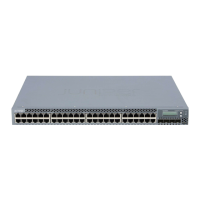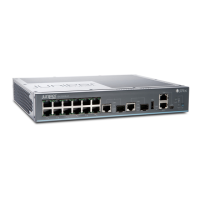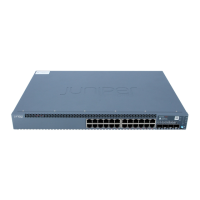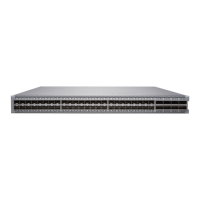Subscriber management (on the routers) or DHCP management (on the switches)
enables you to centrally configure DHCP options on a RADIUS server and then distribute
the options on a per-subscriber or per DHCP-client basis. This method results in
RADIUS-sourced DHCP options—the DHCP options originate at the RADIUS server and
are sent to the subscriber (or DHCP client). This differs from the traditional client-sourced
method (also called DHCP-sourced) of configuring DHCP options, in which the options
originate at the client and are sent to the RADIUS server. The subscriber management
(DHCP management) RADIUS-sourced DHCP options are also considered to be opaque,
because DHCP local server performs minimal processing and error checking for the DHCP
options string before passing the options to the subscriber (DHCP client).
Subscriber management (or DHCP management) uses Juniper Networks VSA 26-55
(DHCP-Options) to distribute the RADIUS-sourced DHCP options. The RADIUS server
includes VSA 26-55 in the Access-Accept message that the server returns during
subscriber authentication or DHCP client authentication. The RADIUS server sends the
Access-Accept message to the RADIUS client, and then on to DHCP local server for return
to the DHCP subscriber. The RADIUS server can include multiple instances of VSA 26-55
in a single Access-Accept message. The RADIUS client concatenates the multiple
instances and uses the result as a single instance.
There is no CLI configuration required to enable subscriber management (DHCP
management) to use the centrally configured DHCP options—the procedure is triggered
by the presence of VSA 26-55 in the RADIUS Access-Accept message.
When building the offer packet for the DHCP client, DHCP local server uses the following
sequence:
1. Processes any RADIUS-configured parameters that are passed as separate RADIUS
attributes; for example, RADIUS attribute 27 (Session Timeout).
2. Processes any client-sourced parameters; for example, RADIUS attributes 53 (DHCP
Message Type) and 54 (Server Identifier).
3. Appends (without performing any processing) the opaque DHCP options string
contained in the VSA 26-55 received from the RADIUS server.
In addition to supporting central configuration of DHCP options directly on the RADIUS
server (RADIUS-sourced options), subscriber management (DHCP management) also
supports the traditional client-sourced options configuration, in which the router’s
(switch’s) DHCP component sends the options to the RADIUS server. The client-sourced
DHCP options method is supported for both DHCP local server and DHCP relay agent;
however, the RADIUS-sourced central configuration method is supported on DHCP local
server only. Both the RADIUS-sourced and client-sourced methods support DHCPv4 and
DHCPv6 subscribers (clients).
NOTE: You can use the RADIUS-sourced and client-sourced methods
simultaneously on DHCP local server. However, you must ensure that the
central configuration method does not include options that override
client-sourced DHCP options, because this can create unpredictable results.
33Copyright © 2017, Juniper Networks, Inc.
Chapter 2: DHCP Local Server

